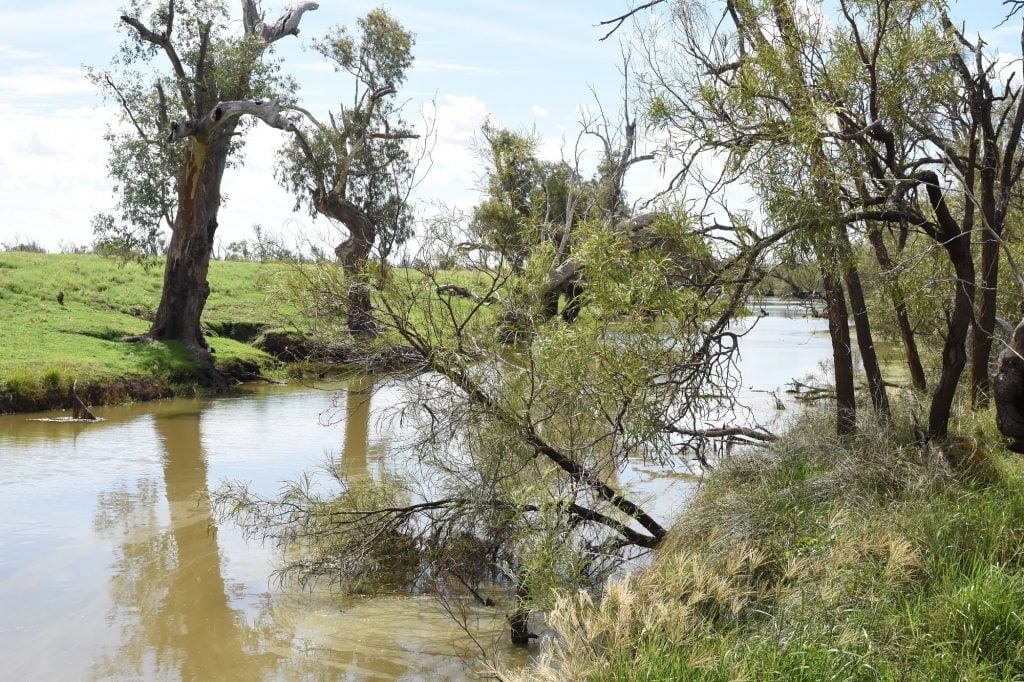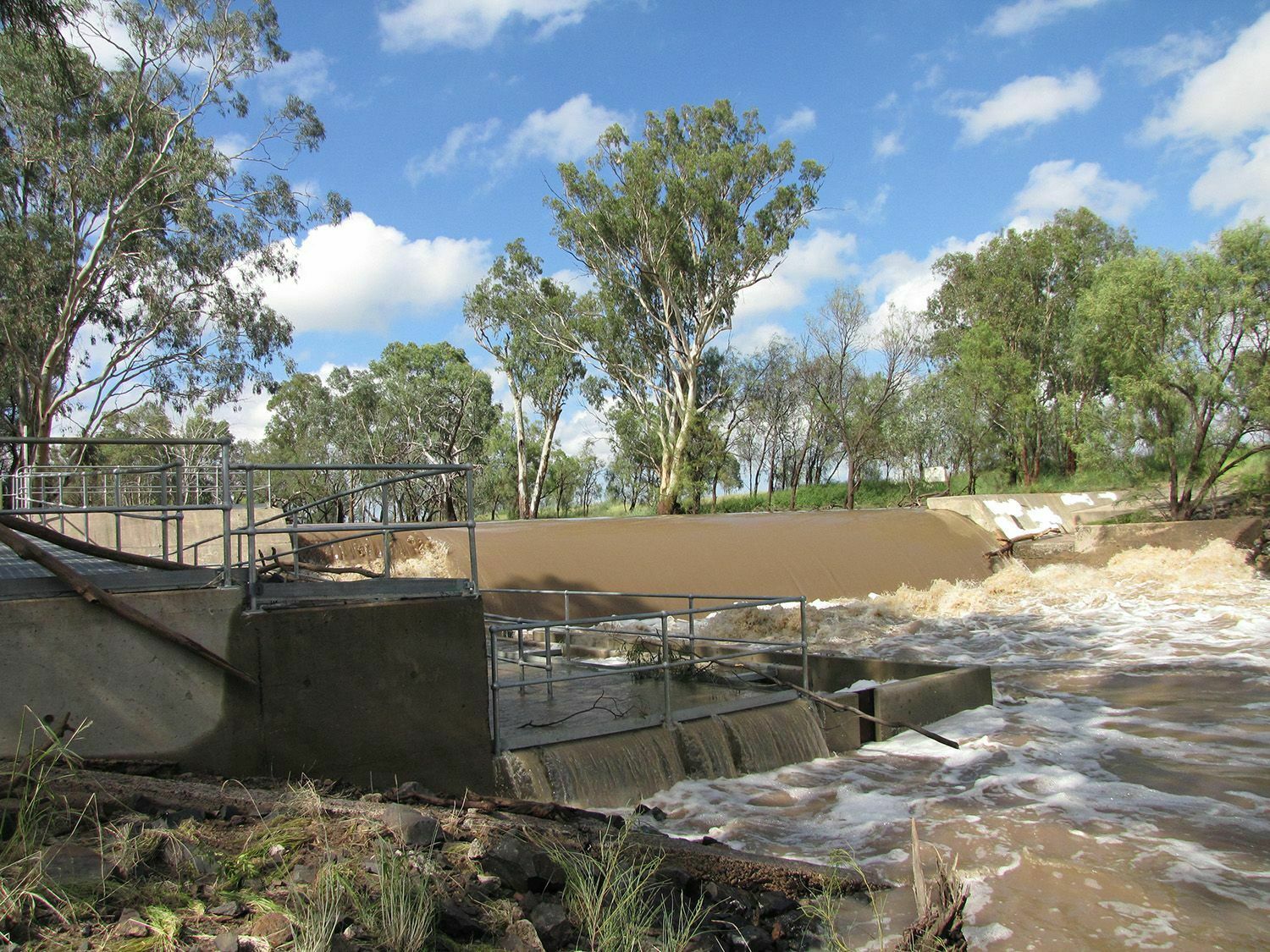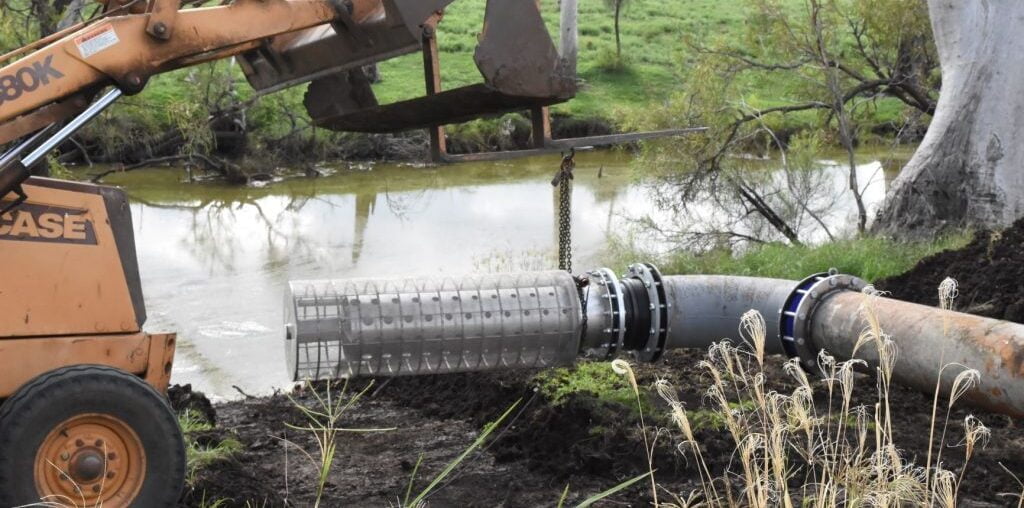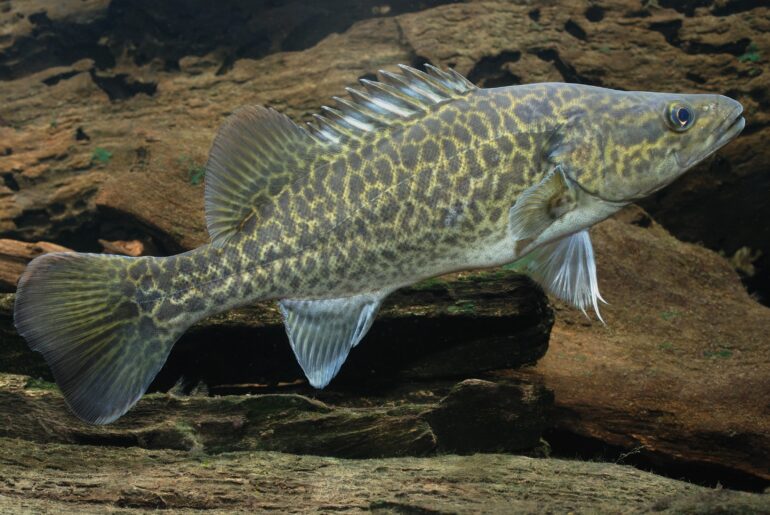Past work by researchers Dr Andrew Norris and others in Oakey Creek (a tributary of the Condamine River), in the Dewfish Demonstration Reach near Dalby, found that up to 1200 fish per mega litre were being removed from the creek through irrigation pumps. Pumping from Oakey Creek occurs on natural flow events (there are no regulated releases from dams), and it is during these natural flow events that many fish are on the move and swim right past irrigation pump inlets. Many of the intakes have coarse trash screens, which prevent large fish from being removed from the river, but large numbers of small fish species and juvenile fish under 100 mm in length are passing through.

With the cooperation of a generous irrigator, the Department of Agriculture and Fisheries were given permission to trial an irrigation screen on an irrigation pump inlet. The screen is an off the shelf, self-cleaning screen, widely used in New Zealand to prevent loss of whitebait through irrigation systems. This screen is probably best suited to small to medium sized irrigation operations. If this screen is successful at keeping fish from being removed from the river, and if it also doesn’t cause fish to be sucked on to the screen it may offer a relatively low cost option for many farms to be fish friendly.


The Department of Agriculture and Fisheries plan to monitor the next major flow event in Oakey Creek. We will compare the screened irrigation intake with a nearby un-screened intake, to determine just how well the screen works for the fish. We will monitor both the screened end, and the outlet end, to determine whether fish are being impinged (negatively affected) or entrained (being sucked in).
We also want to learn from the farmers on the property whether or not the screen affects their pumping efficiency because if we want farmers to use screens to save fish from being removed from the river it needs to be a win-win. We were surprised to find out that a number of irrigators in the district are already trying to stop fish from getting into their systems. Small fish can create problems for the farmers by clogging their lateral irrigation systems. We need to make sure that screening solutions to keep fish out of the irrigation systems, also don’t damage fish in the process.

We are hopeful that, if implemented on a large scale, screening has the potential to keep millions of fish in the river and help the recovery of native fish populations.
Fish screens are also being trialled in other parts of the country, this story has more: First conical fish screen installed in Victoria
Dewfish Demonstration Reach – Condamine Catchment
The Dewfish Demonstration Reach is highly valued in the Condamine catchment in Queensland. To the catchment community the reach is much more than just a waterway but part of their lifeblood which nourishes some of the world’s most productive farming land. The goal of the reach was to restore native fish populations to 60% of pre-European settlement levels. This goal has taken on a special urgency with current native fish populations down by 90% since European settlement. While it’s not a simple or short term task, the reach is proving that it is possible.




